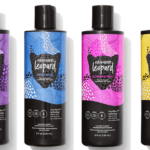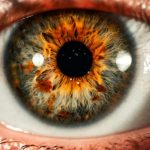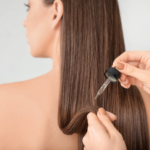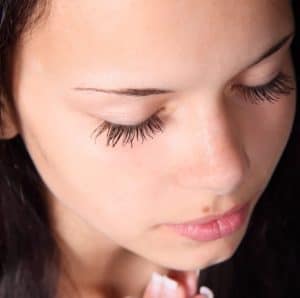Black hair is the most common hair color in the world as the population of China and India combined is 36% of the world’s population. But what about the rarest hair color? I was curious what is the rarest hair color, so I decided to write this article from what I found.
What is the rarest hair color in the world? The rarest hair color in the world is red. Around 1 to 2% of the world’s population has red hair. 1 to 2% of the world’s population of 7.7 billion people is about 77,000,000 to 154,000,000. [1]
| Hair Color: | Percentage in World Population: |
| Red | 1-2% |
| Blond | 3% |
| Brown/Brunette | 11% |
| Black | 75-85% |
Redheads with blue eyes are even rarer because both are recessive traits. Read on to learn more about the rarest hair color in the world as well as other rare hair colors.
Also, for an excellent color depositing shampoo, take a look at our top pick, the Celeb Luxury Gem Lites Colorwash: Color Depositing Shampoo:
Click here to see it on Amazon.
What Is the Rarest Hair Color in the World?
The rarest hair color in the world is red. Next to red hair is blonde, and then followed by brown, dark brown, and shades of black hair. Other shades of red can come into the picture when red combines with other genotype variants (genetic constitution).
Typically, you inherit the color of your hair from your parents. Half of your genes come from your father, and half comes from your mother. Some genotype variations can also affect the color of your hair, aside from genetic inheritance.
Red hair originated from Scotland, including other areas in the British Isles, Ireland, and some regions in the Southern and Eastern Europe. There are many shades for red hair, such as strawberry blonde, red-orange, auburn, and deep burgundy, among others.
Red hair has the highest level of pheomelanin, accompanied by low levels of eumelanin. When this ratio flips over, red hair could either become brown or black hair.
Why Is Red Hair Rare?
Red hair is rare simply because few people have red hair genes to pass onto their offspring. The natural red color is primarily inherited from the genes of parents.
Thus, you will find people with red hair coming from the same country or race. Other factors can also affect the color of your hair, but the leading determinant is your genetic makeup.
Only a few people around the world have these genes; thus, red hair is rare because it hasn’t been passed on to many people.
How Rare Is Red Hair?
People with red hair only comprise 1-2% of the world’s population. 1 to 2% of the world’s population is only about 77,000,000 to 154,000,000. Redhead genes are still confined to some areas in Europe, making them rare.
If a child is not born to parents with red hair alleles, the child will not be getting red hair. Alleles are defined as an alternate form of a gene. A single gene can have multiple versions, and the versions are called alleles.
Where Did Red Hair Originate From?
Red hair originated from the British Isles, and some came from Eastern and Southern Europe.
There are rare instances in which Asians or Africans could have red hair, but this is quite unusual.
List of Celebrities with Red Hair
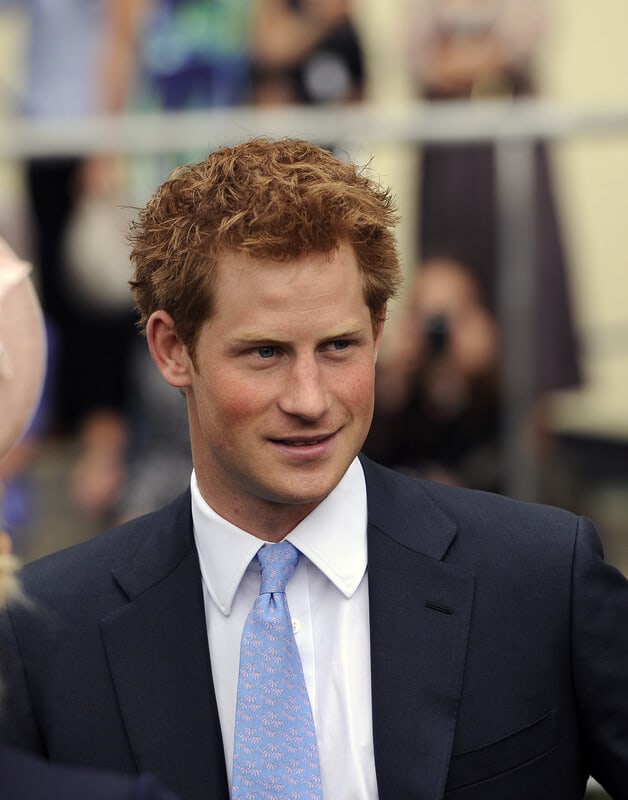
ID 25213523 © Martin Applegate | Dreamstime.com
- Amy Adams
- Prince Harry (Duke of Sussex)
- Jessica Chastain
- Brendan Gleeson
- Nicole Kidman
- Julianne Moore
- Karen Gillan
- Kate Mara
- Shirley MacLaine
Other Rare Hair Colors in the World
Here are some of the other rarest hair colors in the world:
1. Blond Hair

The second-rarest natural hair color in the world is blond hair. There’s only 3% in the world that has blond hair. Usually, they come from Northern Europe, America, and other Western countries. Some of the naturally blond-haired people come from the Pacific Islands, Asia, and Africa (Melanesians).
The shade ranges from ash to strawberry to golden and platinum. Natural blond hair has less hair pigmentation than darker hair colors. Both eumelanin and pheomelanin are lesser too.
People with sandy brown hair and other similar shades tend to have more eumelanin than pheomelanin. Golden brown hair results when there’s more pheomelanin than eumelanin.
2. Brunette or Brown Hair
About 11% of the global population has brown hair. Brown hair originated from the Americas, Europe, Canada, Asia, and Australia.
Brown hair has more eumelanin and lesser pheomelanin. It also has thicker strands than other hair colors and can come in a variety of shades, such as light, dark, maple, milk chocolate, and walnut.
The chestnut shade of brown hair, which is more common, is somewhat reddish in appearance and is predominant in the Eastern, Western, Northern, and Central European regions.
3. Auburn Hair
This hair color is a variety of red hair. Specifically, it is a combination of brown and red. The brown hue comes from eumelanin, and the red color from pheomelanin. This type of hair originated from Western and Northern Europe.
What’s the Most Predominant Hair Color?
We’ve looked at the rarest natural hair color in the world, but what about the most common hair color. The most predominant hair color is black. There is 75-85% of the world’s population that has black hair.
Black hair color originated from all Asian countries, Africa, Latin America, the Americas, and Eastern and Southern European regions.
While red hair is the rarest, blond and brown hair occurs in between the percentages of red hair and black hair.
Typically, black hair occurs when the amount of melanin, especially eumelanin, is sufficient to lend a dark color, such as black.
Factors That Affect Your Hair Color
What affects hair color? What are the factors that could determine your hair color? Just by looking around you, it is somewhat safe to assume that hair color must have something to do with genetics and ethnicity.
You would rarely see an Asian having naturally red hair, as you would not commonly see Celtics with natural black hair. The reason is that the genes that cause red hair or black hair are not there.
Additionally, other factors can also determine your hair color. So, what is the proven science behind the color of your hair?

1. Genetics
The color of your skin, hair, and eyes have something to do with heredity. You inherit 50% of each of your parents’ genes.
First, you have to take note that there are recessive and dominant genes. When combined, the dominant gene wins. However, there are other gene combinations or variants that would allow the recessive gene to come out to any of the offspring. Hair color genetics is undoubtedly a complex subject matter.
Example:
When a mother carries the recessive gene for red hair and the father has the dominant gene for black hair, the dominant gene for black hair generally wins.
But, somewhere down the line, when both genes coming from the mother and father are recessive, a red-haired child would eventually come out.
This situation can be explained more clearly using the Punnett square to determine the probability of the offspring acquiring a specific genotype. The square is a visual representation of what colors to expect from the father and mother alleles.
| Parent 1: | Parent 2: | Possible Hair Colors: |
| Black | Black | Black, brown, or any recessive hair color (if the parent is heterozygous) Black (if both parents are homozygous) |
| Brown | Brown | Brown (both parents are homozygous) |
| Brown | Black | Black, brown |
| Red | Black | Red, black |
| Auburn | Blond | Auburn, blond |
The table above is something similar but not precisely a Punnett square.
Take note that there’s a difference between homozygous and heterozygous genotypes as well. Homozygous genotypes are those with identical alleles, while heterozygous are those with different alleles.
Examples:
- XX or xx are homozygous as they have the same alleles (X and x)
- Xy or xy are heterozygous as they have different alleles (X and y)
The dominant allele usually rules over the recessive allele. A specific example is a disorder called albinism. The allele for the normal melanin production is dominant, but the allele for albinism is recessive. Let’s represent the dominant allele as the capital letter A, and the recessive allele as the small letter a.
Hence, if both are present in a genotype, Aa, the dominant A, which is for normal pigmentation, would rule over the recessive albinism allele a.
So, in this specific example, albinism will not occur because the normal dominant allele A dominated the recessive allele a.
2. Melanin
The pigment called melanin is responsible for the color of your skin, hair, and eyes. The two types of melanin: pheomelanin and eumelanin, determine the color of your hair.
For darker hair colors (black/brown), the quantity of eumelanin is more, while for lighter black hair colors, the amount of eumelanin is lesser, resulting in white hair color. For lesser eumelanin in brown hair, the resulting color would be blond.
On the other hand, pheomelanin is responsible for your red or orange hair. It’s believed that the majority of people have pheomelanin, but it’s a recessive hair color, so black or brown colors often dominate. Take note that the brown allele is dominant over the blond allele.
However, it’s also possible for brown-haired parents to have a blond-haired child. In this case, parents have heterozygous genes or phenotypes.
3. Sunlight or Scattering of Light
Sunlight or scattering of light can also affect hair color. These color changes often depend on the angle and how light scatters on the surface of your hair. This effect is only temporary, as it’s only a reflected visual effect.
However, the UV rays of the sun could make your hair age more quickly and permanently because of the damage to the hair shaft and hair pigments.
If you stay under the sun without a protective covering, your hair will become lighter, grayer, or whiter with constant exposure. This process is called photobleaching. Many people in Europe do this.
Nevertheless, avoid too much skin exposure to the sun as it will also increase your risk of skin cancer.
4. Achromotrichia or Aging
The hair of children tends to turn darker as they age. When they reach the age of puberty, the natural color of their hair breaks through. As they continue to age, the color of their hair starts to turn gray in their 20s.
At 40, white hair will start to appear and increases as you age. In America, around 60% have gray hair at age 40. The deficiency of melanin causes gray hair. It’s a natural part of aging.
Achromotrichia occurs in any race or ethnicity, as gray hair in old age is common all over the world.
5. Albinism and Other Conditions
- Albinism: This condition is characterized by the absence of pigments that are normally present in the skin, eyes, and hair. Thus, a person with albinism tends to have gray or white hair and skin, including light-colored eyes. Graying of the hair prematurely can also be due to other conditions, such as vitiligo, pernicious anemia, malnutrition, and Werner syndrome.
- Smokers’ Hair: Studies also found out that the hair of smokers tends to turn gray faster than non-smokers. Smoking is not only detrimental to your hair, but your skin and lungs as well.
- Chemotherapy Side Effect: Some patients grow darker hair colors after chemo treatment.
- Stress: Even though empirical data has not proven that stress has, indeed, an effect on premature aging, experts believe that undue or extreme stress causes achromotrichia, with graying hair as one of the symptoms. Observe people around you, and most probably, you would agree with this general conclusion that continuous stress does age people.
6. Artificial Coloring
Dye your hair permanently or temporarily to change the color. Lots of people do this nowadays. Pick your hair color, and presto–you have brand new hair! Keep in mind, though, that dyeing your hair could permanently damage your natural hair color. So, think carefully before proceeding.
Can Hair Color Change?
Yes, hair color does change over your lifetime, depending on the hair genes you have inherited.
The progression usually starts with lighter hair color in babies, darker hair color during the teenage years, strands of gray hair at early adulthood, and gray or lighter hair color in old age.
Conclusion – What Is the Rarest Hair Color in the World?
To revisit our initial question, what is the rarest hair color in the world? The rarest hair color in the world is red, with blond and brown coming in next. There is only 1-2% of the population with red hair, and they originate from the British Isles and some parts of Eastern and Southern Europe.
To give you a summary of the rare hair colors and their percentages concerning the world’s population, see the table below:
| Hair Color: | Percentage in World Population: |
| Red | 1-2% |
| Blond | 3% |
| Brown/Brunette | 11% |
| Black | 75-85% |
So, whatever hair color you have, remember what’s more important–to have healthy hair. But if you want to try the rarest hair color in the world, which is red, go to a good stylist and get it dyed!
Related reading:



